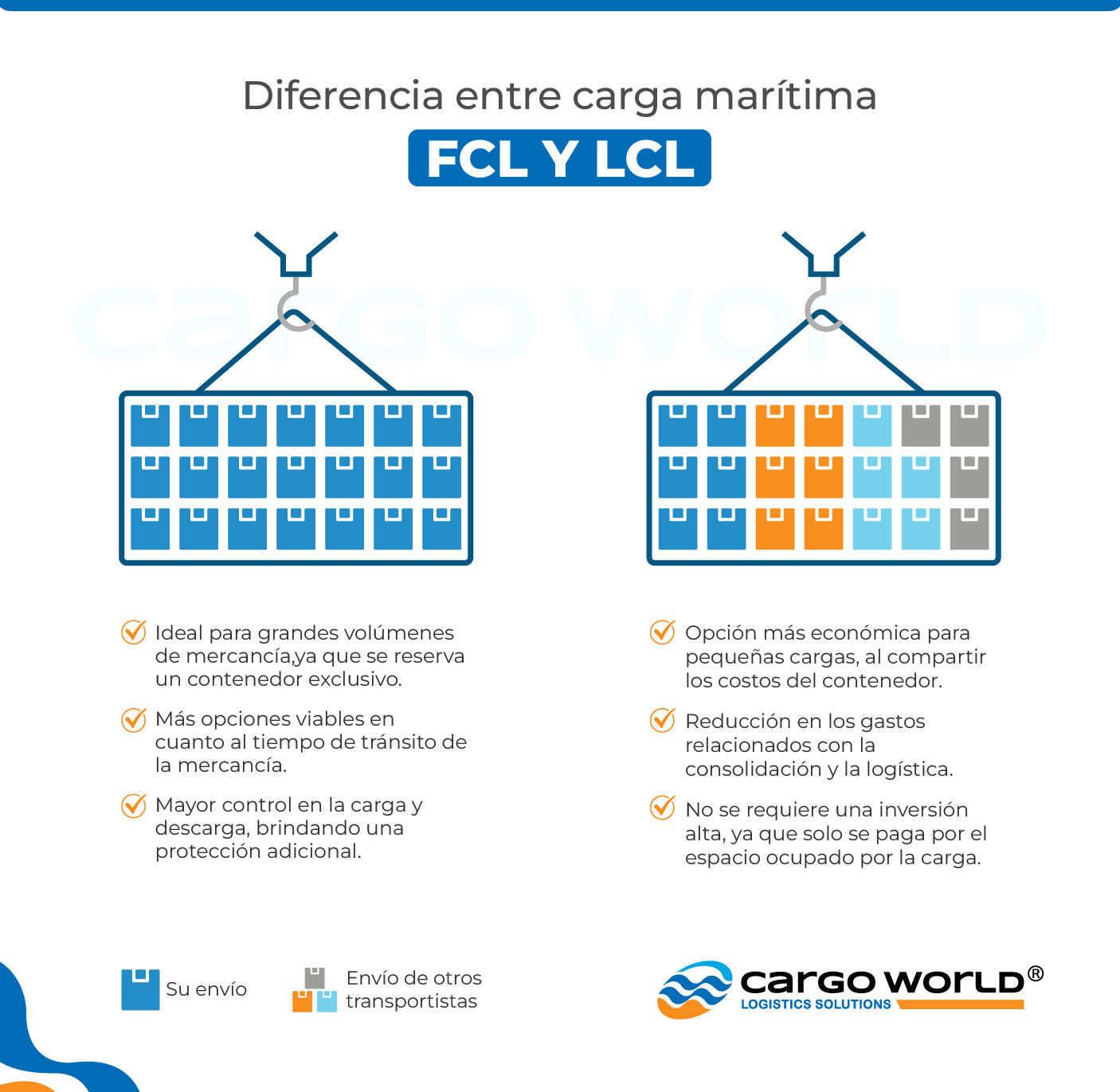
FCL VS LCL: WHICH IS THE BEST OPTION FOR YOUR SEA SHIPMENTS?
Maritime transport is one of the most widely used methods for shipping goods internationally. Within the cargo options, two key terms you should know are FCL (Full Container Load) and LCL (Less than Container Load). Choosing between these two options depends on your cargo volume, cost, and logistical needs. Below, we explain in detail the differences and advantages of each option.
What is FCL (Full Container Load)?
FCL, or full container, refers to when an exporter reserves the entire space of a container, without sharing it with other goods. This means that the container is filled exclusively with the sender’s products.
What is LCL (Less than Container Load)?
On the other hand, LCL refers to when an exporter’s cargo does not fill the entire container, so it shares space with other senders’ goods. The cargoes are consolidated into one container and then separated upon arrival at their destination.
Key differences between FCL and LCL
| Characteristic | FCL (Full Container Load) | LCL (Less than Container Load) |
|---|---|---|
| Container space | Reserved exclusively for one sender | Shared with other senders |
| Cargo volume | Ideal for large volumes | Ideal for small volumes |
| Cost | Higher initial cost but more economical per cargo unit if filled | Lower initial cost but more expensive per unit due to shared handling |
| Transit times | Generally faster, as the container does not require consolidation or deconsolidation | Longer times due to consolidation and deconsolidation |
| Cargo handling | Less handling, reducing the risk of damage | More handling, greater risk of damage |
| Flexibility | Less flexible, as the container must be filled | Greater flexibility for smaller shipments |
Advantages of FCL
Advantages of LCL
Which to choose?